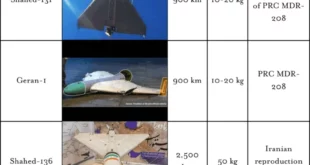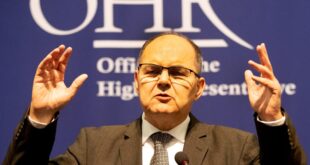China has gone through major political transformations over the past decade, with the rise and consolidation of Xi Jinping’s power being a key driver. The change in leadership has been accompanied by power centralisation, governance changes, anti-corruption drives, and growing ethnic tension. This decade coincided with China’s rise in the international system, with the leadership deciding to further strengthen its domestic hold for eventual global leadership preparations.
Charting Xi’s Decadal Trajectory
The decade began with the gradual consolidation of Xi Jinping’s leadership, from vice-president to vice-chairman of the all-powerful Central Military Commission (CMC) in 2010. He became general secretary of the Chinese Communist Party (CCP) in 2012 at the 18th CCP Congress, and was reconfirmed to the post at the 19th CCP Congress in 2017. Like the Mao Zedong period, this decade witnessed an unprecedented centralisation of power—this time in Xi’s hands. Xi now heads various decisive posts, ranging from political, to economic, to military. As many as 13 such crucial posts have been identified, earning him the sobriquet, “Chairman of Everything” by Geremie R Barmé. Xi’s consolidation of power even at the cost of procedures established under Deng Xiaoping and others has been seen recently.
While the Politburo’s “leading small groups” (LSGs) were the actual power centres in China, Xi began propping up the LSG on comprehensively deepening reform and other institutions directly under him to reduce bureaucratic delays and other structural, governance-related complications. To tighten Xi’s hold, the strength of the all-powerful Politburo Standing Committee was reduced to seven from nine at the 2012 CCP Congress, with only two members (Li Keqiang and Wang Yang) from a rival political faction, the Communist Youth League. There is a clear projection of the ‘New Zhijiang Army’ (cadres and officials who worked with Xi in Zhejiang province) and the Shaanxi gang (Xi’s home province).
Apart from centralising power, Xi also removed term limits on the state institutions of the president and vice-president at the March 2018 session of the National People’s Congress. This led to speculation that a sixth generation of the political leadership may not be anointed at the forthcoming 20th CCP Congress in 2022, in addition to possibly extending his term for life. This is in contrast to an August 2006 Central Committee directive on cadre management that restricts the age of prospective Politburo members at 63 years. 68 years is the cap for a Politburo Standing Committee membership; the result of a drive that Deng Xiaoping called the CCP’s nianqinghua (youthfulness). The powers-that-be suggest that such acquisition of powers is necessary to realise the “China Dream,” “China rejuvenation,” and the “two centennials”: of the CCP in 2021, and the People’s Republic in 2049.
Centralising Power through Bureaucratic Machinery
Xi has taken several measures to centralise power. He has used various party and administrative platforms to strengthen and further control China’s coercive and ideological state apparatuses. His power centralisation is reflected in the CCP’s expanding influence and monopoly. This can be seen in party members’ behaviour and absolute loyalty, control over party-state institutions and state-owned enterprises, educational institutions, curbs on private businesses, arts and culture, and the media. A National Supervisory Commission was established after the 19th CCP Congress to ensure the party’s supervision over all state-led bureaucratic structures. In October 2020, after Alibaba chief Ma Yun criticised the banking regulatory system, the CCP began regulating private enterprises with party branches. Incidentally, former President Jiang Zemin’s son, Jiang Zhicheng, is a stakeholder in Alibaba’s Ant Group. This is significant as private enterprises today generate over 60 per cent of the country’s GDP, and e-commerce platforms have become indispensable since the pandemic began. Likewise, the July 2020 ‘political rectification campaign’ to rope in the police and judiciary machineries.
As a part of the state’s ideological apparatuses, the education system has come under heavy CCP supervision. Before becoming general secretary, Xi said in January 2012 that “university party organs must adopt firmer and stronger measures to maintain harmony and stability in universities. Daily management of the institutions should be stepped up to create a good atmosphere for the success of the Party’s 18th congress.” Later, he suggested that the rank and file observe three principles: “one-party leadership and multi-party cooperation,” “the party’s absolute leadership over the army,” and “governing for the people.”
A National Security Commission was established at the crucial third plenary meeting of the 18th Party Congress in November 2013, to further consolidate internal and information security. The fourth plenum in October the following year provided Xi a chance to focus on corruption. The sixth plenum in October 2016 provided a chance to further tighten intra-party supervision and control over the rank and file. By October 2016, Xi had been elevated to the ‘core’ of the leadership—thus granting him unprecedented influence much like Mao Zedong, Deng Xiaoping and Jiang Zemin before. The October 2017 19th CCP Congress further consolidated his position by ushering in a ‘new era’, and positioning his Belt and Road Initiative (BRI) in the party Constitution.
A few party-bureaucratic changes further enhanced Xi’s hold. In late 2020, Xi introduced procedures for the Politburo standing committee, politburo and central committee meetings by assigning himself the right to set the agenda of the meetings. Another measure is at the end of every year “self-criticism” speeches were “encouraged” by Xi from all politburo standing committee members at the Zhongnanhai compound. Many of these meetings of course end in the glorification of Xi and his deeds, a new personality cult in the making of Xi. Further, the 2019 party regulations stipulate that all rank and file of the CCP should “resolutely safeguard” Xi’s status as “core” of the party’s leadership. The 2015 and 2018 disciplinary regulations further provide for strictures against those who pronounce “groundless criticism of the party’s decisions and policies”.
An Anti-Corruption Campaign to Address Political Opposition
Consolidation of power has had ramifications within the party as well, with many perceived-to-be political rivals removed from high posts in the party-state either on corruption or other charges. Thus, Bo Xilai, a serious political contender who was Xi’s senior in the school meant for revolutionary party-military cadres during the 1950s in Beijing, was removed. Bo served as commerce minister, and party secretary for Shenyang, Dalian, and Chongqing. He was involved in an open debate in July 2011 on the virtues of the “Chongqing model,” which emphasises certain Maoist “red” campaigns and striving for “common prosperity,” as against Wang Yang’s “Guangdong model” of GDP growth rates.
Soon other high-level party members were also targeted, with security chief in the Politburo Standing Committee, Zhou Yongkang, implicated in July 2014 and sentenced for life in prison in June 2015. Earlier, Railways Minister Liu Zhijun, responsible for expanding the hi-speed railway network across the country and considered to be close to Jiang Zemin, was dismissed in February 2011 for “severe violation of discipline.” In 2012, Ling Jihua, a protégé of Hu Jintao and United Front Work Department (UFWD) leader, was demoted from a ministerial role to a lower-level position, before finally being sentenced to life imprisonment in 2016 over corruption charges. A 2012 Bloomberg newspaper report citing Vice President Xi’s relatives amassing US$ 376 million led to the publication being shut down in China. A New York Times scoop on Premier Wen Jiabao’s family wealth was also banned.
Other civilian leaders arrested on corruption charges include Sun Zhengcai (July 2017) Ma Jian (December 2016), Jiang Jiemin, Li Dongsheng, Wang Yongchun, Su Rong, Xu Gang, Lu Wei, and others. Senior military leaders were also targeted during this anti-corruption drive, many of whom belonged to Jiang Zemin’s faction. No one however from among the “princelings”: Xu Caihou, Guo Boxiong, Gu Junshan, Wang Shouye, Yang Jinshan, Liu Zheng, Yu Daqing, Fang Wenping, Wei Jin, Rao Kaixun, Ye Qing, Meng Zhongkang, Xu Xianghua, and others.
Xi’s anti-corruption campaign further strengthened his position vis-à-vis other rival factions, much like Deng Xiaoping’s handling of the Central Commission for Discipline Inspection in the late 1970s and 80s consolidated his role in the party.
Repression of Civil Liberties Reinforces Protest Culture
Power centralisation in China over the past decade was accompanied by a proportional decline in civil liberties, which had already been battered by the authoritarian trends of the seven previous decades. On the country’s 2010 National Day, 23 CCP elders submitted an online petition for the restoration of freedoms granted in the 1982 Constitution, and criticised the extensive censorship. Instead of responding positively, China not only disallowed Liu Xiaobo from receive the Nobel Peace Prize conferred to him, but also barred his wife Liu Xia from receiving the award. Beijing also clamped down on the Arab Spring-inspired Jasmine Revolution protestors starting 17 February 2011. Over the next two months, the famous artist Ai Weiwei was arrested on tax evasion and other charges. On 15 October 2014, Xi attended a ‘Forum on Art and Literature’, calling on artists to create “socialist culture and art” that was “artistically outstanding and morally inspiring,” and offering the “correct” perspectives with regard to history, nationality, and culture. It reminds one of Mao Zedong’s Yanan speech on the subject in 1942.
In a rare setback in 2012, Cheng Guangcheng, a visually challenged activist-lawyer, escaped house arrest and sought refuge in the US embassy in Beijing. He flew to the US the following month. Another human rights activist-lawyer, Pu Zhiqiang, was arrested in May 2014. To exercise greater control over universities, a May 2013 internal order specified the subjects to be taught. Further, on 19 August 2013, Xi called for extensive curbs on media coverage, and asked for the raising of a “strong army to seize the ground of new media.” This triggered more extensive media censorship. Real-estate tycoon Ren Zhiqiang was incarcerated in May 2016 for his allegorical essay indirectly criticising Xi. More curbs followed in September 2016, with the State Council introduction of a Social Credit System, aided by big data, to monitor all Chinese citizens for ‘good’ and ‘bad’ behaviour.
Protests and Resistance Movements
Nevertheless, despite mounting curbs, China today is home to a vibrant protest culture. The “mass incidents” that the premier of the State Council of China used to report to the NPC—recently discontinued—have reportedly increased substantially over a period of time. While 8,700 such incidents were witnessed in 1993, they rose to 58,000 in 2003, and 87,000 by 2005. Sun Liping of Tsinghua University estimated 180,000 in 2010. Chen Chih-Jou Jay of Academia Sinica in Taipei examined 12,000 such incidents in 2000-2019, and concluded that there has been a growing use of surveillance and repression to curb such protests during Xi’s tenure.
While political protests are spreading across the country, one of the most significant developments is the ever-growing activism of the country’s ethnic minorities. China’s ethnic policies in Tibet, Xinjiang, Inner Mongolia, and other areas have resulted in a spike in cases of protests and violence. Xinjiang has witnessed more violent protests than in Tibet or Inner Mongolia. Displacement of local ethnic groups by Hans, loss of economic activities, jobs, and resources, and China’s “strike hard” policies are said to be behind the rise in ethnic protests.
China denies the one million Uighurs incarceration charge made by several international human rights groups. The July 2009 Urumqi incident which witnessed over 187 deaths in a span of two hours is the most extensive one so far, although periodically, several protests have been reported in western Xinjiang. A 2018 study that examined ethnic violence at the county level in Xinjiang from 1990 to 2005 observed that interethnic inequality has contributed to such violence. Tibet has seen protests in 1959 after the Dalai Lama’s flight, 1987 Strasbourg proposals, and the 2008 Beijing Olympics. There have been a high number of self-immolation-related deaths in the past few years. The 29 August 2020 Chinese decision to further “sinicize” Tibet is fuelling further uncertainties.
 Eurasia Press & News
Eurasia Press & News


